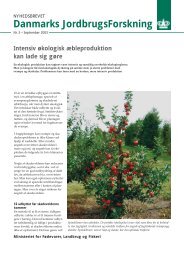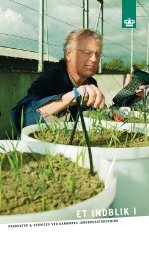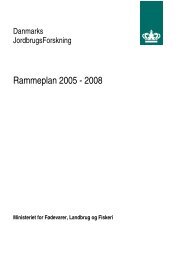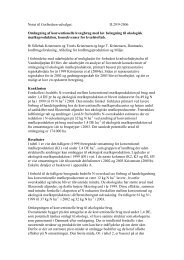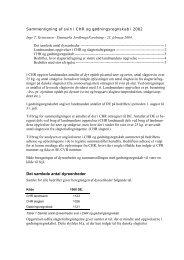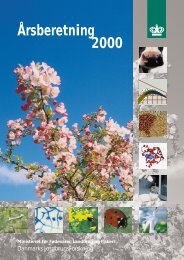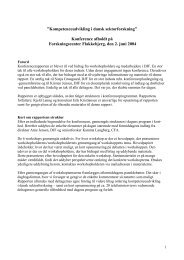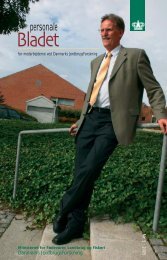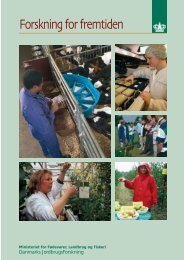Reproduction performances and conditions of group-housed non ...
Reproduction performances and conditions of group-housed non ...
Reproduction performances and conditions of group-housed non ...
You also want an ePaper? Increase the reach of your titles
YUMPU automatically turns print PDFs into web optimized ePapers that Google loves.
- Paper I -<br />
Gilts<br />
When it comes to gilts, the effect <strong>of</strong> flushing is confirmed in several studies (Cox et al.,<br />
1987; Flowers et al., 1989; Beltranena et al., 1991). The experiments mentioned, have all<br />
been investigating the effect <strong>of</strong> high (41.7 MJ ME day -1 -ad libitum) contra low (22.6-25 MJ<br />
ME day -1 ) energy intake. A moderate restriction in energy intake (34.0 MJ ME day -1 ) during<br />
day 8-15, but not during day 1-7, in oestrus cycle, seems to impair embryo survival,<br />
however, the number <strong>of</strong> embryos at day 28 in pregnancy were not affected significantly<br />
(Almeida et al., 2000).<br />
The effect <strong>of</strong> more restricted feeding <strong>of</strong> gilts before mating has, as far as we know, not been<br />
studied in the recent years but Anderson (1975), who investigated the effect <strong>of</strong> total starvation<br />
<strong>of</strong> gilts in ten days before mating, found that the ovulation rate was reduced compared<br />
to control animals given a full diet (2.7 kg). The question is, however, whether this lower<br />
ovulation rate will result in lower litter size because a positive correlation between the ovulation<br />
rate <strong>and</strong> the embryo mortality seems to exist (Toplis et al., 1983). In the study by Cox<br />
et al. (1987), the number <strong>of</strong> fetuses 60 days after mating tended to be decreased in the sows<br />
fed the low energy intake (P




